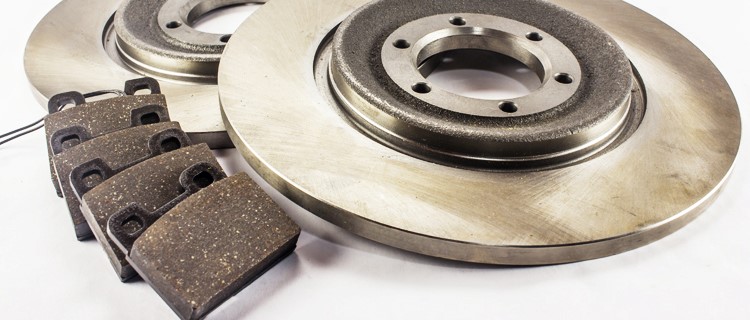TIRECRAFT Tips – Types of Brake Pads
August 5, 2020
Uncategorized

Brake pads are an essential component of the braking system of your vehicle. Every time you touch the brakes, your brake pads go to work to help stop your vehicle from moving. Brake pads come in different types to best fit the type of vehicle you have and your driving conditions.
To learn more about what brake pads are, visit our Brake Pads Article by clicking here.
Brake pads can be made up of Semi-metallic, Organic, or Ceramic materials which each have their own unique pro’s and con’s to consider. Let’s review the different types of brake pads below:
Semi-Metallic Brake Pads
Most cars and other vehicles use semi-metallic brake pads. These are made up of metal shavings from copper, steel, graphite and brass bonded with resin. They are best suited for vehicles used for everyday driving. Heavy Duty vehicles also use semi-metallic brake pads since they need the high braking power with heavier loads.
Semi-metallic brake pad manufacturers have different formulations for creating their products and continuously improving them for efficiency and noise reduction. Semi-metallic brake pads are known to perform well and last longer because they are made primarily out of metal. They are also a great economical option for consumers.
Semi-metallic brake pads are however heavier in weight compared to other kinds of brake pads, so fuel efficiency could be slightly effected depending on the vehicle.
These brake pads perform best when they are warm, so when driving in colder climates they may need time to warm up. If you are braking before they are fully warm, you might experience a slight delay in response time.
Organic Brake Pads
Organic brake pads are made up of ingredients like glass, rubber and Kevlar bonded in resin. They are softer and perform well in high temperature conditions because the heat actually helps bond the ingredients together. Organic brake pads are typically quieter even after extended use. They are also eco-friendly and don’t have such an impact on the environment.
That being said, Organic brake pads are not very durable and will wear out sooner than alternatives and need replacing sooner. Since they wear down easier Organic brake pads are mostly used for lightweight vehicles and lighter traffic conditions where there is less weight and excessive braking.
Ceramic Brake Pads
Lastly there is ceramic brake pads. These brake pads are made up of ceramic fibers and other filling materials bonded together. These brake pads are light weight and quiet compared to the others. They last longer due to their make-up and improved durability.
Ceramic brake pads however, can be quite expensive up front. As they are durable and brake down slowly, they don’t need replacing as often as the other options.
So in summary, there are a number of things to consider when choosing the correct brake pad for your vehicle. The performance expectation as well as your driving style will all play a part in making a decision. Call your local TIRECRAFT shop today to discuss brake pad options for your vehicle.
https://www.yourmechanic.com/article/what-are-brake-pads-made-of
Back

